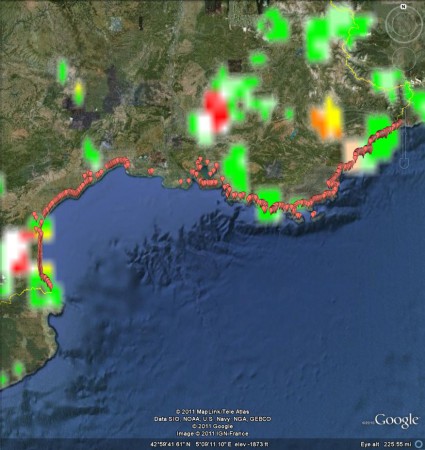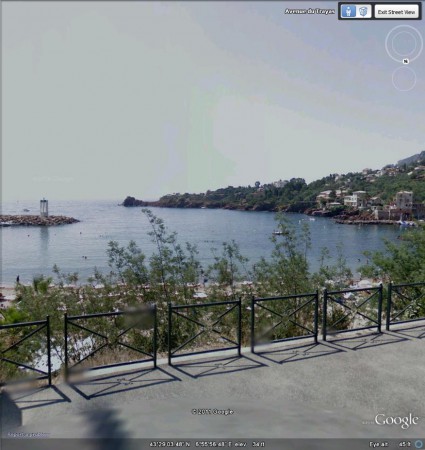- So apparently there’s a British Goat Society.
- More on that Nordic Food Lab. Note connection to NordGen.
- Beer Chicks do Rome artisanals. So much one could say about this.
- Mopani worms in London. Best place for them.
- South Sudan’s seed system.
Nibbles: Breeding, Frankincense and myrrh, Roman pills, Chinese botanic garden, NPGS, Green red bush tea, Old banyan, Terroir, Botanic gardens and invaders, AnGR
- National Organic Coalition suggests USDA’s National Institute for Food and Agriculture separate conventional and participatory breeding from anything involving DNA in considering projects for support.
- Second-guessing the Three Wise Men.
- Yet more on attempts to deconstruct ancient Roman medicines using DNA from tablets found in a shipwreck. Real Indiana Jones stuff.
- Botanic garden and genebank for drought-resistant plants to be established “in Asia’s largest wild fruit forest.” That would be in China. I really don’t know what to make of this. Really need to find out more. But why am I talking to myself?
- Brown (rice) is beautiful.
- Feedback from a genebank user. Kinda.
- Rooibos gets itself certified.
- The oldest cultivated tree on record.
- The taste of Massachusetts.
- “…strongly conservation-minded botanic gardens appear to be in the minority.” Easy, tiger. Will that new one in China (see above) feature in this minority?
- ILRI on an Aussie TV program on conserving local livestock breeds in Africa.
Nibbles: Food Deserts, Garlics, Communication, Bee breeding, Millets, Sweet potatoes, Visualizing herbaria, Medieval beer
- The Economist discovers food deserts. Money quote: “some Americans simply do not care to eat a balanced diet, while others, increasingly, cannot afford to”.
- William Woys Weaver on garlics, and America, and garlic in America.
- Agricultural Communication for Development conference. Sure. But 12 days long?
- Breeding a better bee. And why not?
- Kenya Agricultural research Institute to release three new high-yielding finger millets.
- Too many sweet potato seedlings. What’s a poor breeder to do?
- A visual history of California botanizing.
- Ah, to have lived at a time when a man got most of his calories from beer! No, wait…
Nibbles: FAO, Spirituality, ASARECA, Land use, Conservation agriculture, REDD, Colombian beans, Immigrant cooking, Exploding watermelons, AnGR
- Calestous Juma gives new FAO head some advice: find a role, build on what farmers do and know, engage civil society, help governments prioritize, and slash bureaucracy.
- Religion and conservation: friends of enemies?
- Eastern Africa Agricultural Productivity Project seems to be mainly about setting up regional centres of excellence in dairy, cassava, rice and wheat. Maybe ASARECA should ask for some advice from Prof. Juma?
- Land use map of the UK. Let the mash-upping begin.
- Training in sustainable conservation agriculture in India and Mexico. But how really sustainable is the whole thing if based on modern varieties? Oh, and Brazil too.
- Saving the Amazon for $33 a month.Or maybe just a buck?
- Local cooking a long way from home, Part I; from Colombia to Washington DC.
- Local cooking a long way from home, Part II; from everywhere to New York’s Lower East Side.
- Don’t worry, exploding watermelons are perfectly safe, and legal.
- FAO updates its webpage on “Implementing the Global Plan of Action for Animal Genetic Resources” and documents the fact by providing a time stamp. Jeremy chuffed.
Picking a good agrobiodiversity beach
My apologies to Robert Hijmans, the developer of DIVA-GIS. I had forgotten how awsomely awesome his software. It was really only the work of half an hour to export a shapefile of the distribution of wild and weedy accessions from Genesys, open it in DIVA-GIS, produce a gridfile of taxon richness, export it as a KMZ, and open it in Google Earth, together with The Guardian’s European bathing places dataset, which I had prepared earlier.
A beach called La Figueirette at Theoule-sur-Mer is right in the middle of that (relative) hotspot of species richness not far from the Italian border shown in light orange on the map above. And the beach doesn’t look too bad either, at least on StreetView.
Now, to check out the lakes…

